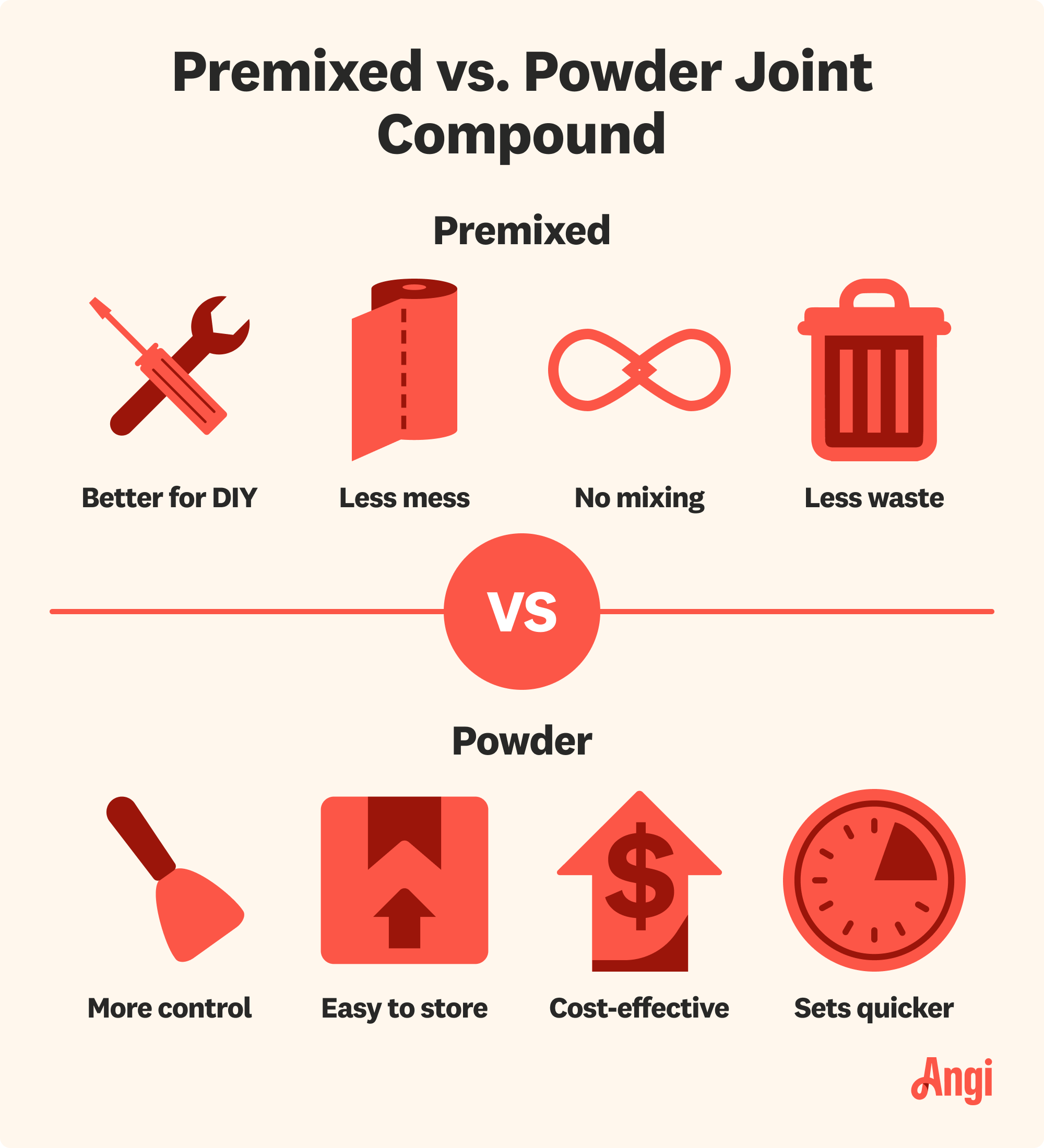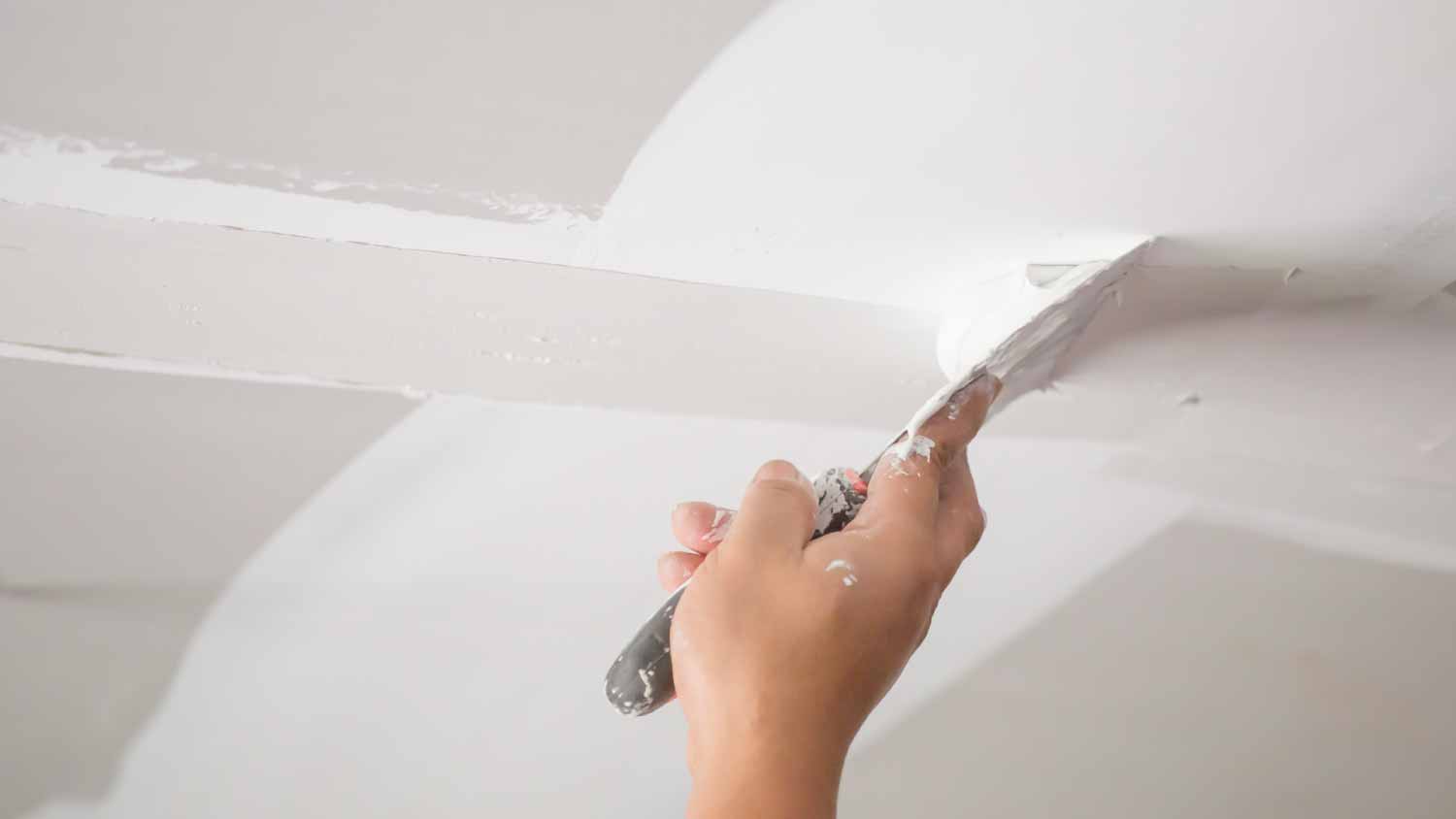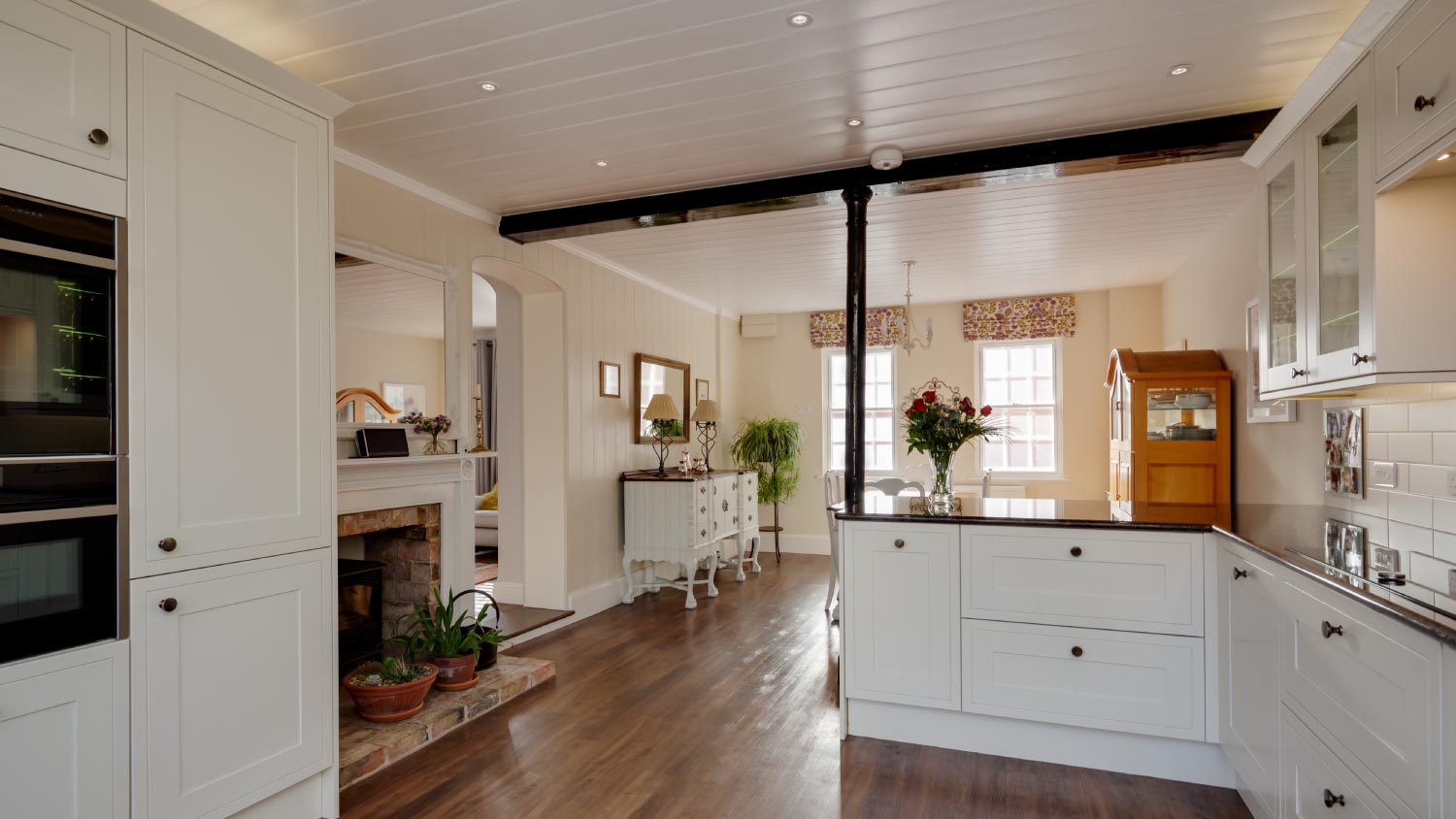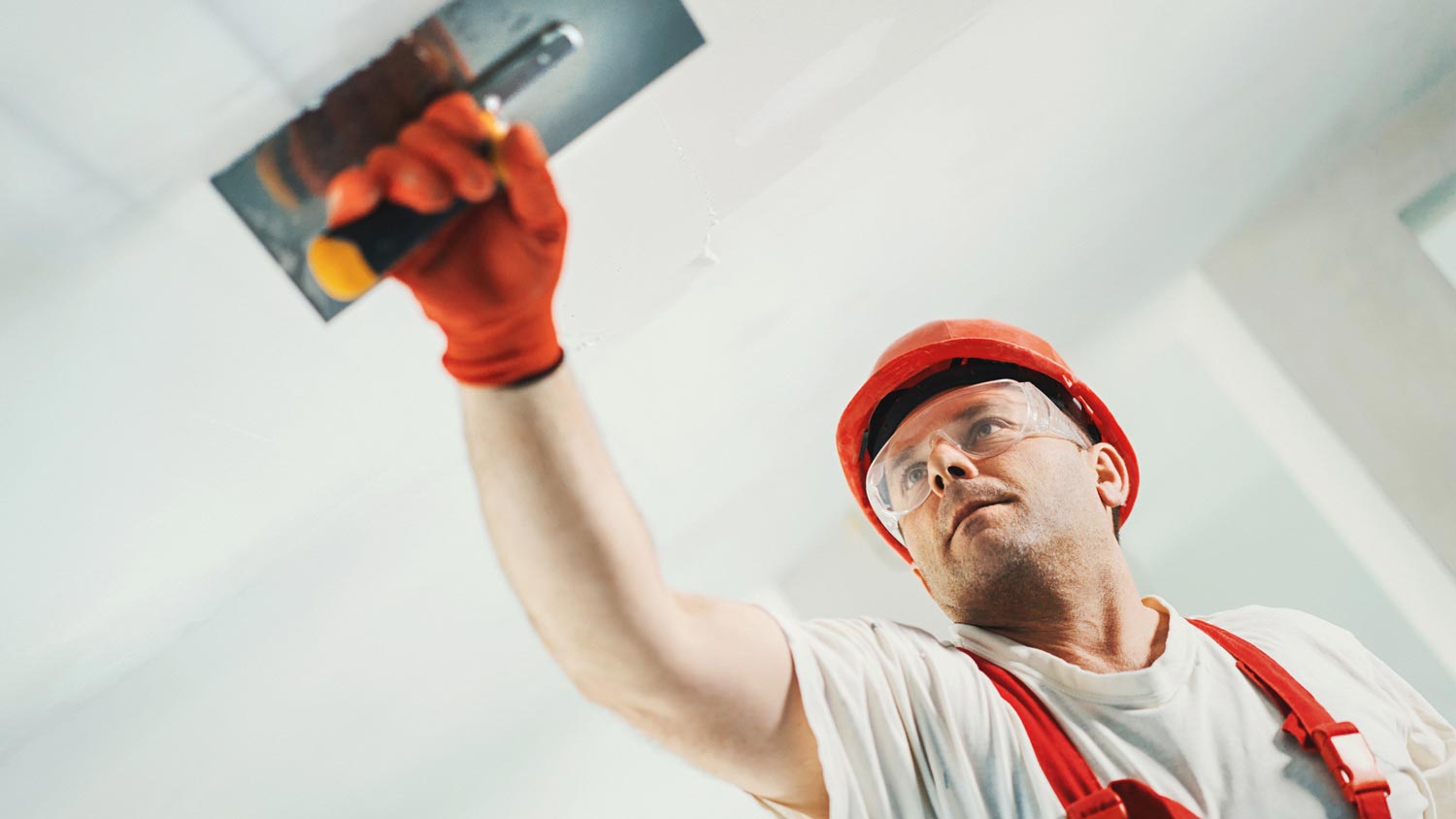
Pre-drywall inspection costs vary depending on the home size, build complexity, and reporting you receive. Estimate your budget with this cost guide.
Yes, it’s a filler—but no, it’s not the same as spackle


Joint compound is a type of filler made with gypsum sand.
It has a longer drying time than spackle, which makes it good for joining drywall.
With its thin consistency, joint compound can be harder for beginners to use than spackle.
Just when you’ve learned about all the various types of spackle, the phrase joint compound joins the party. Joint compound is just a fancy name for what’s also sometimes called “drywall mud,” a substance made up primarily of gypsum dust. Joint compound is used to join sheets of drywall or provide a finishing layer on top of drywall. Below, we’ll walk you through everything you need to know about joint compound and when to use it.
Joint compound is a white, pasty substance that’s made up of gypsum dust (and sometimes a mix of limestone). When mixed with water, these minerals create a compound with the texture of toothpaste—or mud, hence the nickname—which can be used to finish and fill the joints between two sheets of drywall, like in corners, for example.

Although joint compound is almost always made primarily of gypsum dust, there are a few different types of joint compound on the market.
All-purpose joint compound, which is the most common type, is used for joining separate sheets of drywall or large-scale repairs.
Taping joint compound is designed to be used with drywall tape.
Topping joint compound is specially formulated to create the smoothest possible finish on the final layer.
Setting joint compound, sometimes called powder joint compound, sets the quickest (between 20 and 60 minutes). Because it’s harder to use, this one is often best left to the pros.
Joint compound is particularly useful for specific kinds of finishing and filling because it takes longer to dry than spackle. That means the person who’s doing the construction has more time to smooth it down and make it perfectly even, which is especially important at wall joints.
Unlike joint compound, spackle can be made up of several different materials, including sodium silicate, epoxy, vinyl, and acrylic. Gypsum-based spackle is also available, but it may include binding agents that make it dry faster than joint compound, and it’s ideal for different purposes, like repairing damaged walls or filling holes.

Still not sure which to use? Here are some of the pros and cons of joint compound and spackle at a glance.
Joint compound may shrink more than spackle when it dries. This can lead to cracking, especially when it’s applied thickly.
Joint compound is thinner than spackle. This makes it easier to spread, but it can be harder for beginners to work with.
Some types of spackle can be used on a greater variety of surfaces. These include brick, wood, and stone. Joint compound won’t stick to all of these.
Spackle cannot be used as a substitute for joint compound. However, joint compound can be used as a substitute for spackle.
Still have doubts? Your local drywall installer can help you figure out what’s what—and take care of the hard work so it’s done right (and your clothes stay clean).
From average costs to expert advice, get all the answers you need to get your job done.

Pre-drywall inspection costs vary depending on the home size, build complexity, and reporting you receive. Estimate your budget with this cost guide.

Installing beadboard ceilings is a great DIY project. Learn what to expect cost-wise from this project, whether removing or covering a popcorn ceiling.

Skim coating drywall is a great alternative to replacement, and is often more affordable. Use this guide to estimate the cost to skim coat walls in your home.

Whether you’re renovating a room or finishing a home addition, this guide on how to cut drywall will make your job easier and help keep your home neat.

You're down to the nitty-gritty of drywall supplies and now you need to know if paper vs mesh drywall tape is the way to go. Here's how to choose.

Skim coating helps smooth out drywall before you apply paint. Learn how to skim coat a wall in eight steps with this guide.